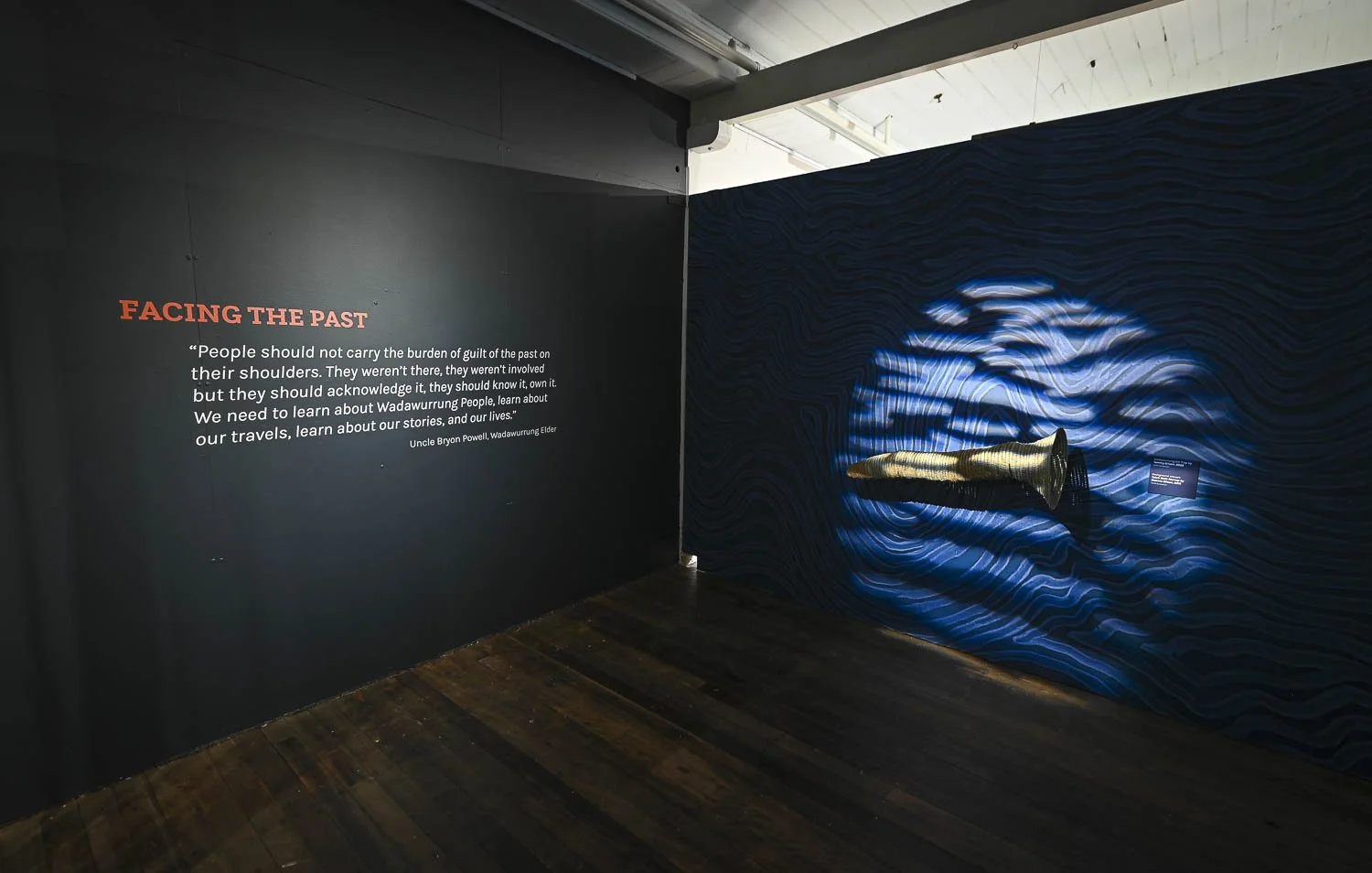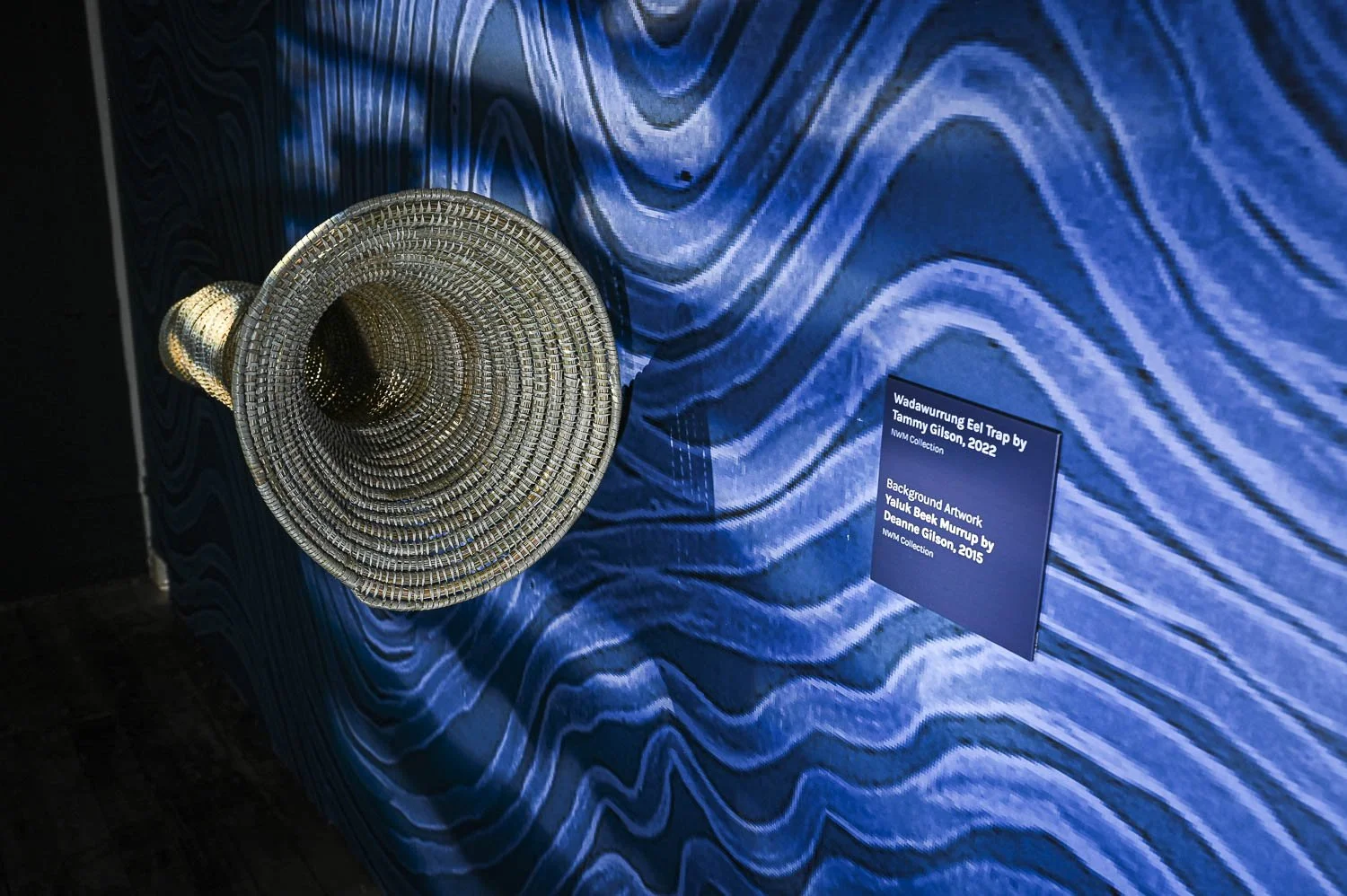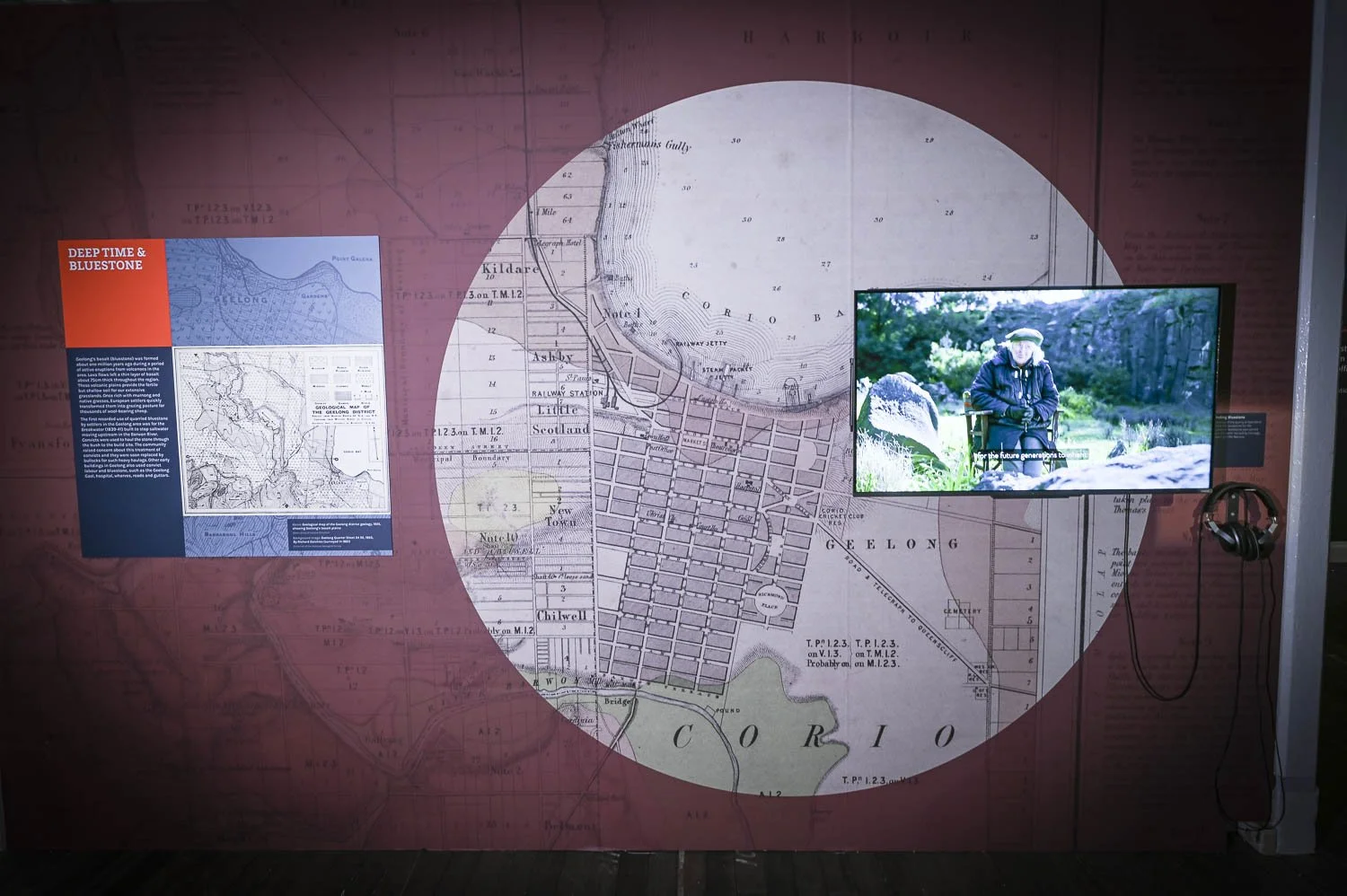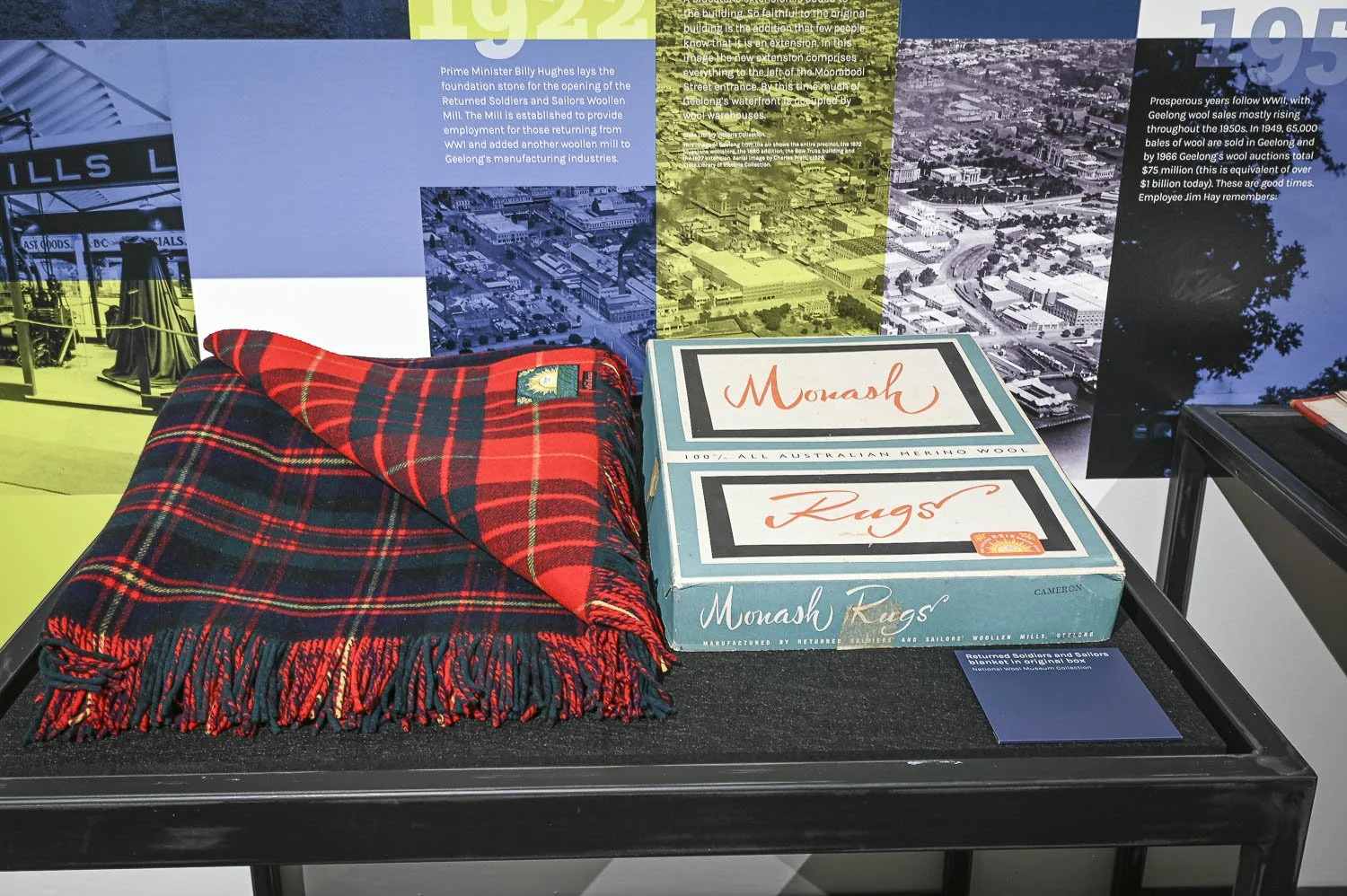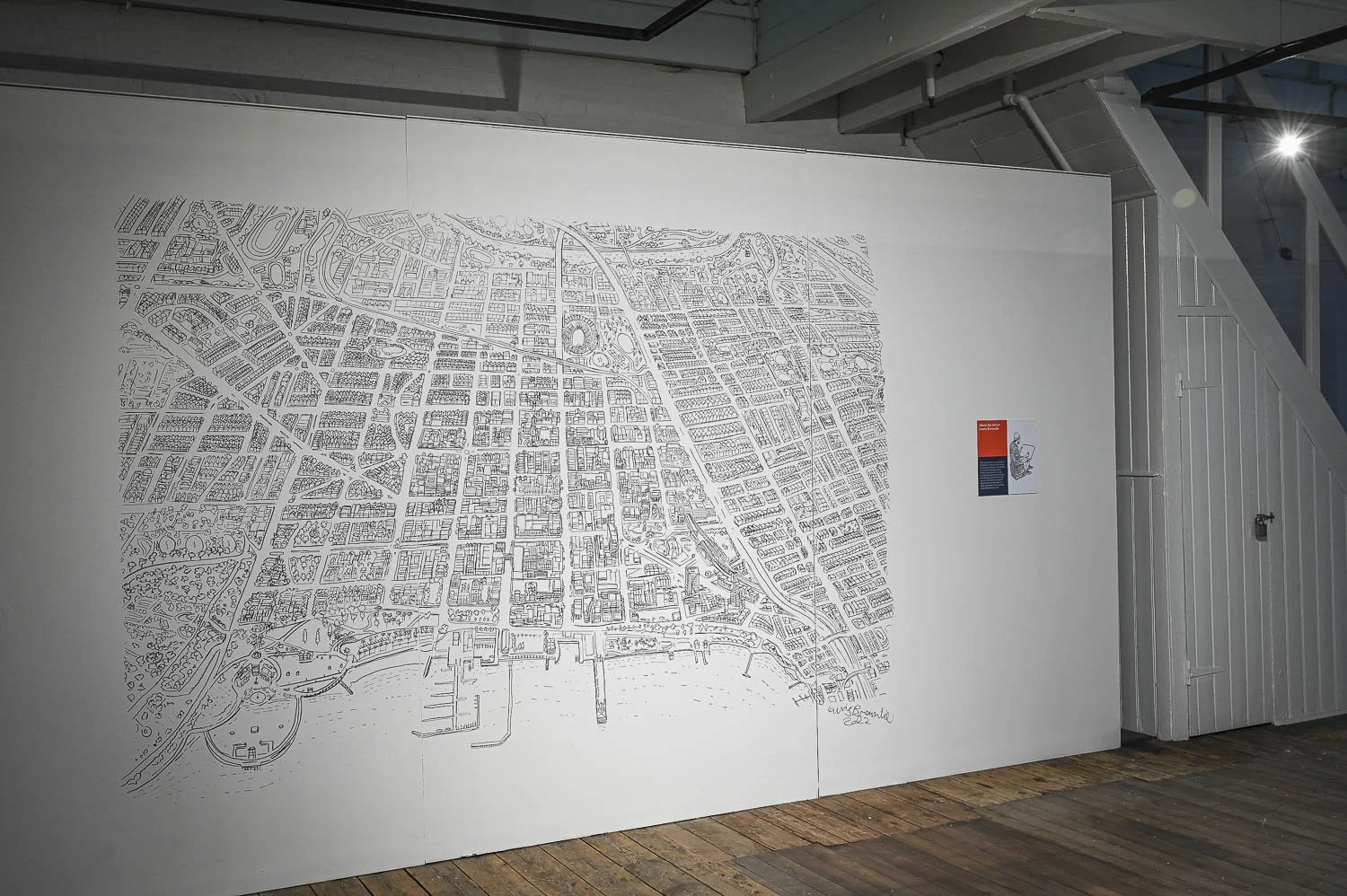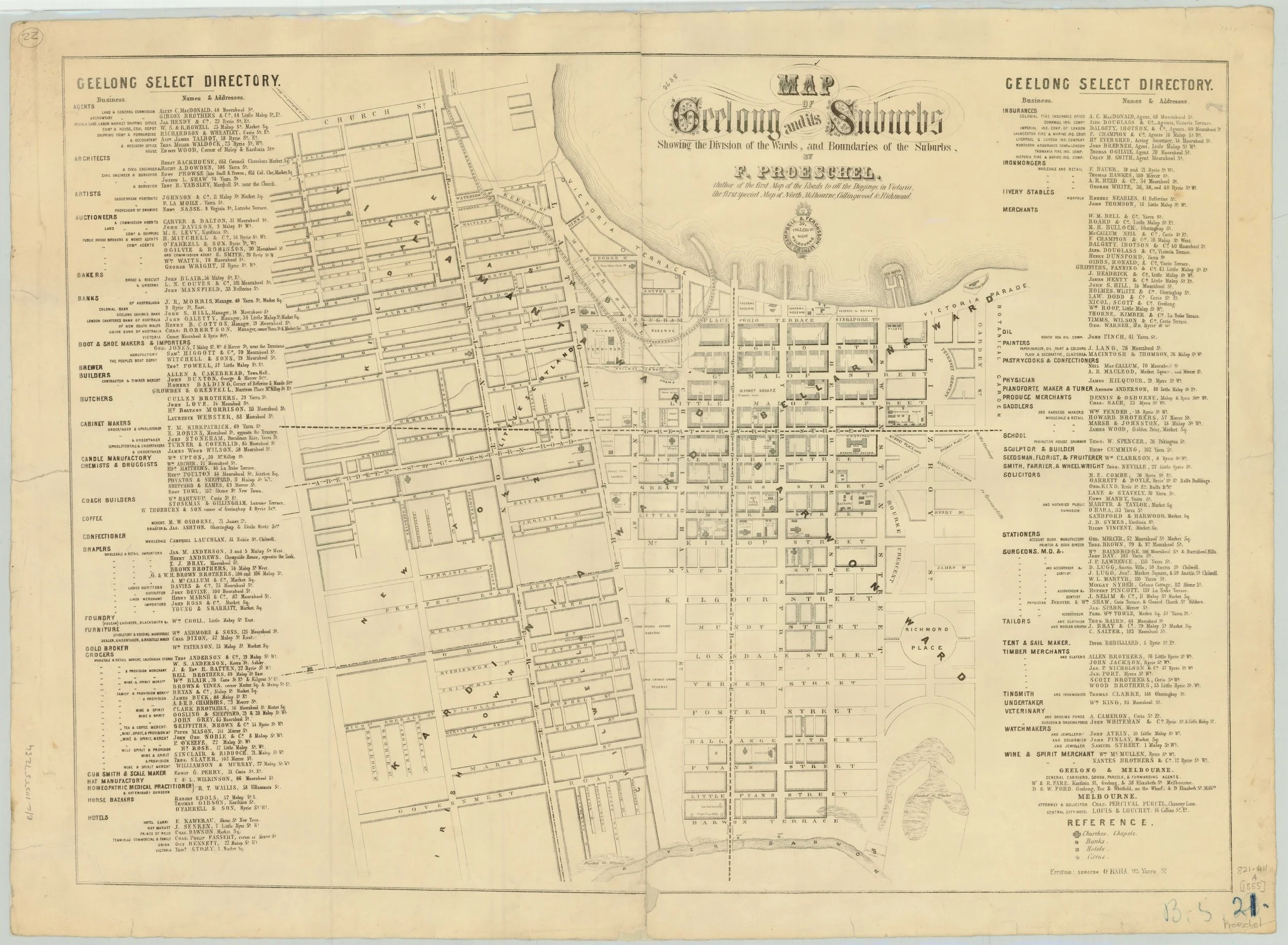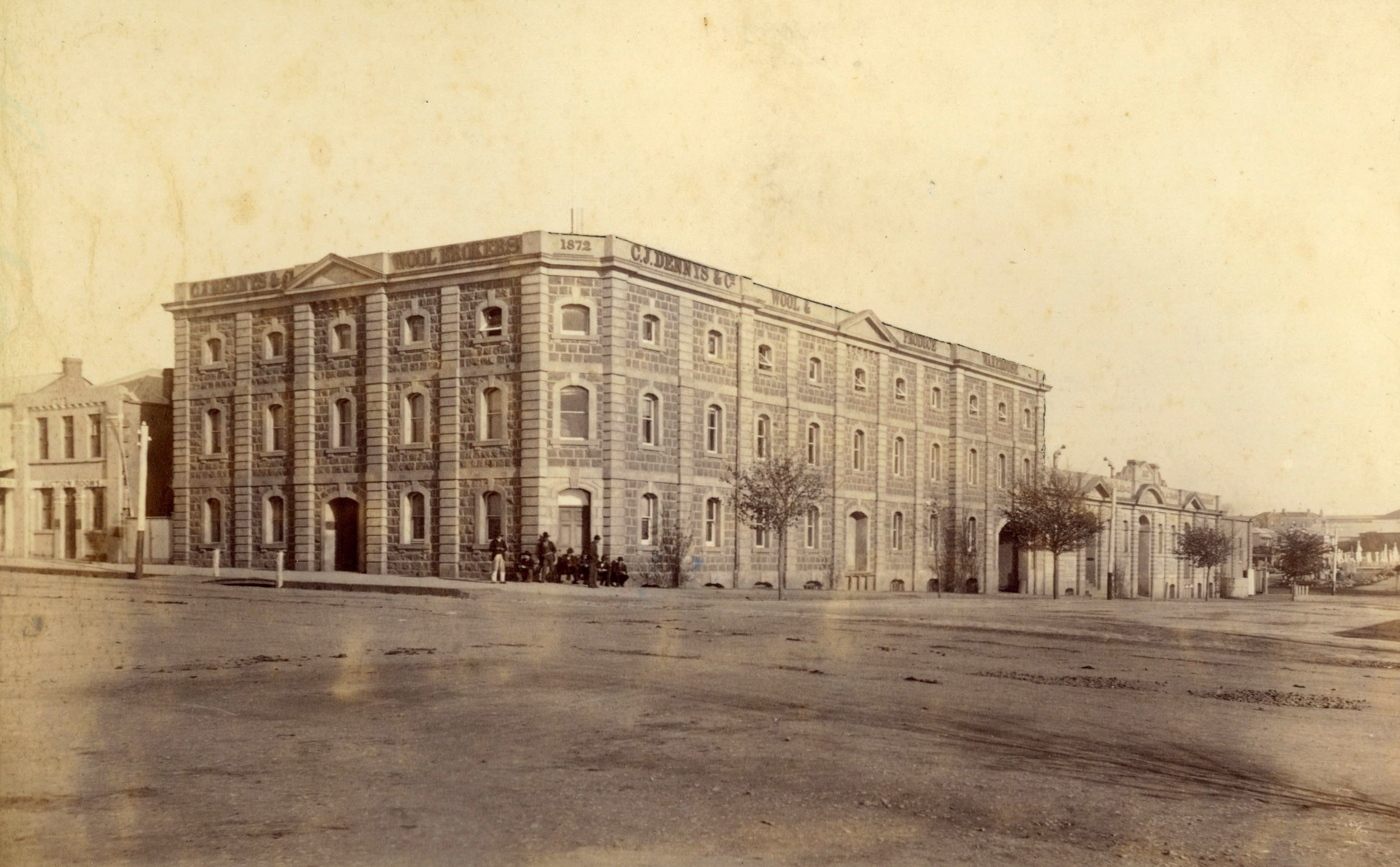
Bluestone
150 Years of the Dennys Lascelles Woolstore
Lead curator | 500sqm | August 2022 - December 2023 | National Wool Museum, Geelong, Australia
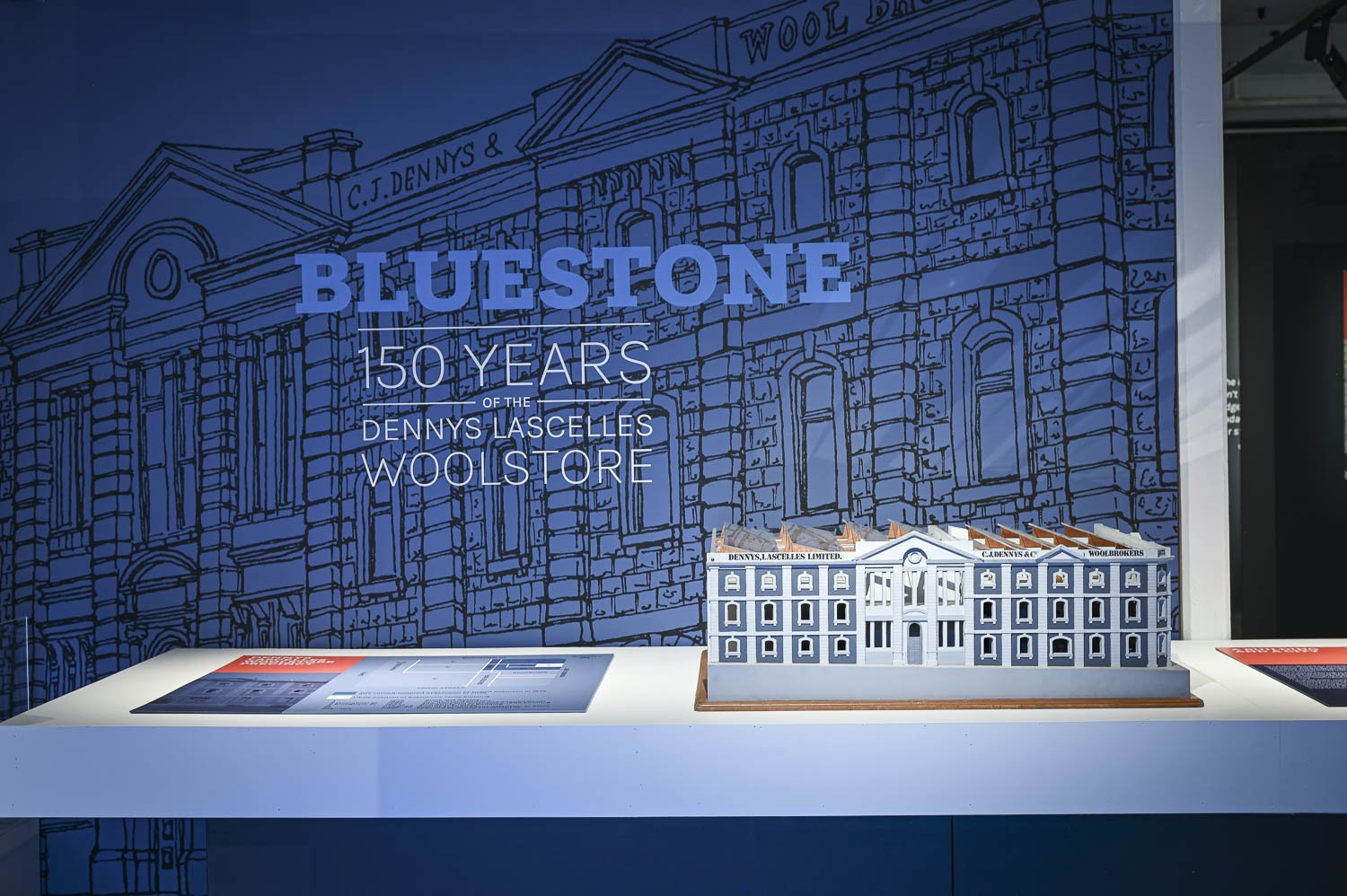
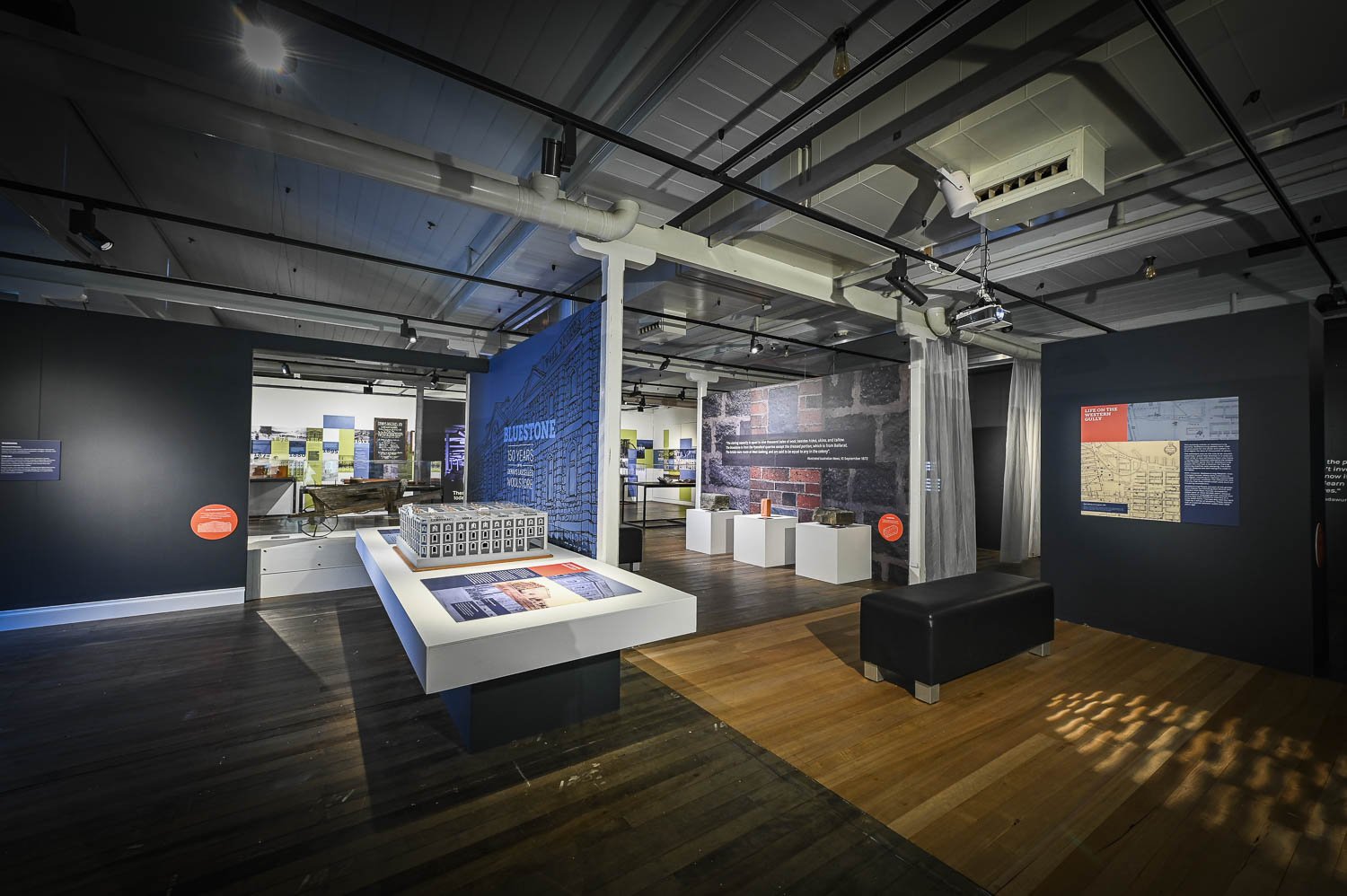
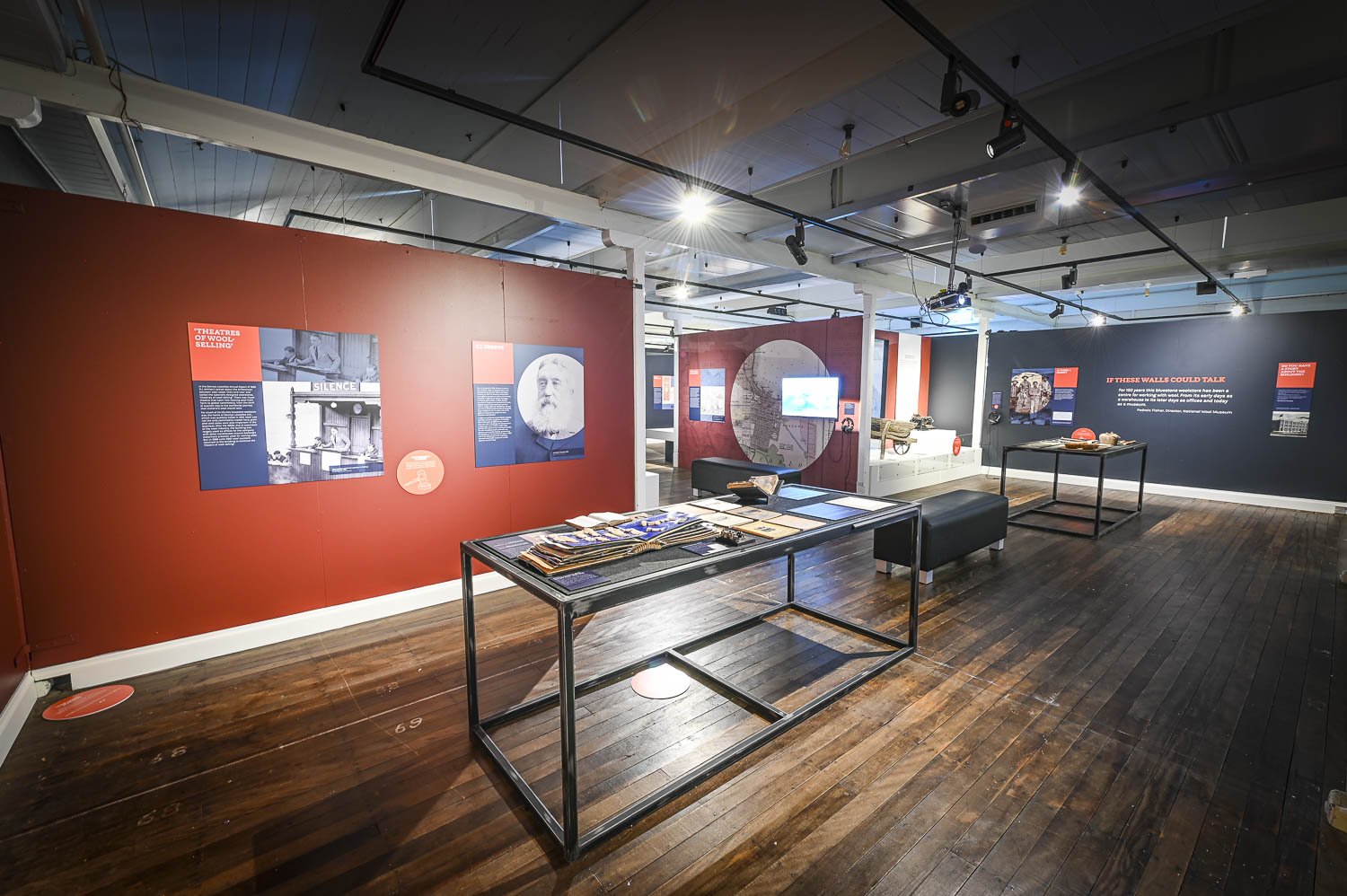



Bluestone told the story of a building. The exhibition explored the deep connection with the geology of the area, the 60,000 years of continuing Wadawurrung culture and confronted head-on the colonisation of the region and events leading up to the opening of the woolstore. It explored industry innovations and the sometimes moving, sometimes humorous stories of those who ‘walked these halls’.
1 August 1872 the CJ Dennys & Co Woolstore opened, adorning the corner of Moorabool and Brougham Streets, Geelong/Djilang, Australia. The same year the telegraph connected Australia to the world. At the time it was the second largest store in Victoria and by all accounts the “most elaborate”.
The building was an innovation in colonial architecture, with advanced design that helped usher-in a new way of commerce by storing, selling and shipping wool worldwide. Many thought it extraordinary to build the elaborate three-storey bluestone woolstore in Geelong. It brokered and sold wool until the 1990s.
Bluestone looked at the significance of the building, the stories contained in its walls and the role it played in the story of Geelong/Djilang and Australia. It considered the many faces of CJ Dennys and explored forgotten stories.
But Bluestone was not just about the past. It also explored the contemporary and the future by inviting community to come and share their stories and contribute to the future life of the building.


Bluestone approached the history and the place through an innovative approach. The concept of the history and the heart was used to create the exhibition. The history was a timeline of events that have occurred in the life of the site and was a history that might be expected. The heart contrasted this approach, to use themes to identify and showcase the ongoing life of the place. Juxtaposing the chronological approach with a thematic exploration opened the possibilities for what could otherwise have been a purely celebratory exhibition.
To further engage audiences a “hands” element was added as a space to reflect and engage the community in the future of the site. The exhibition was created as a reflection on the past and sought to retell the wool story by starting out at a specific location. The relationship between local, national and even global stories played out in the exhibition. Bluestone was as much about the story of a building as it was about the deep roots of place.
The exhibition displayed the extensive object and image collection held by the National Wool Museum and the regions collecting organisations.
Credits
Exhibition Design Pete Wilson
Exhibition Graphic Design Studio Megan Atkins
Eel Trap by Tammy Gilson, NWM Collection
Artist Illustrations of Geelong by Lewis Brownlee
Exhibition photographs by Reg Ryan
Objects and historical imagery National Wool Museum Collection
Historic map Geelong Heritage Centre Collection
